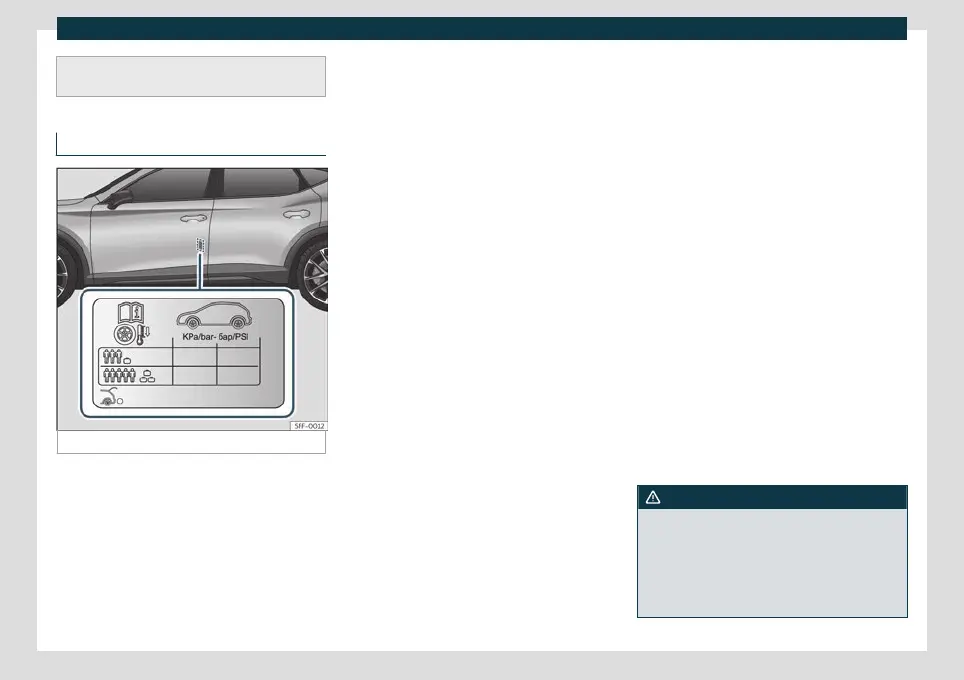Practical tips
●
Nev
er mount used tyres if you are not
sure of their “previous history”.
Tyre life
Fig. 212 Location of the tyre pressure sticker.
Correct inflation pressures and sensible driv-
ing habits will incr
e
ase the useful life of your
tyres.
●
Check tyre pressure at least once a month,
and also prior to any long trip.
●
The tyre pressure should only be checked
when the tyres are cold. Do not reduce the
pressure of warm tyres.
●
Adjust tyre pressure to the load being car-
ried by the vehicle
›››
Fig. 212 .
●
In vehicles with a tyre pressure indicator,
save the modified tyre pressure
›››
page 342 .
●
Avoid fast cornering and hard acceleration.
●
Inspect the tyres for irregular wear from
time to time.
Tyre pressure
The tyre inflation pressures are listed on a
sticker on the rear of the front left door
frame
›››
Fig. 212 .
Insufficient or excessive pressure greatly re-
duces the useful life of the tyres and ad-
versely affects vehicle performance and ride.
Correct inflation pressures are very impor-
tant, especially at high speeds.
The tyre pressure must be adjusted accord-
ing to the load the vehicle is carrying. If the
vehicle is going to carry the maximum load,
the tyre pressure should be increased to the
maximum value indicated on the sticker
›››
Fig. 212.
Do not forget the spare wheel when check-
ing the tyre pressures: Keep this spare wheel
inflated to the highest pressure required for
the road wheels.
In the case of a minimised temporary spare
wheel (125/70 R18) inflate to a pressure of
4.2 bar as indicated on the tyre pressure la-
bel
›››
Fig. 212 .
Driving style
Fast cornering, heavy acceleration and hard
braking (squealing tyres) all increase tyre
wear.
Wheel balance
The wheels on new vehicles are balanced.
However, certain circumstances may lead to
imbalance (run-out), which is detected as vi-
brations in the steering wheel.
Unbalanced wheels should be rebalanced,
as they otherwise cause excessive wear on
steering, suspension and tyres. A wheel must
also be rebalanced when a new tyre is fitted
or if a tyre is repaired.
Incorrect wheel alignment
Incorrect running gear alignment causes ex-
cessive tyre wear, impairing the safety of the
vehicle. If you notice excessive tyre wear,
you should check wheel alignment at a spe-
cialised CUPRA Service or SEAT Official
Service.
WARNING
Unsuitable handling of the wheels and tyres
may lead to sudden tyre pressure losses, to
tread separation or even to a blow-out.
●
The driver is responsible for ensuring that
all of the vehicle tyres are correctly inflated
to the right pressure. The recommended
338

